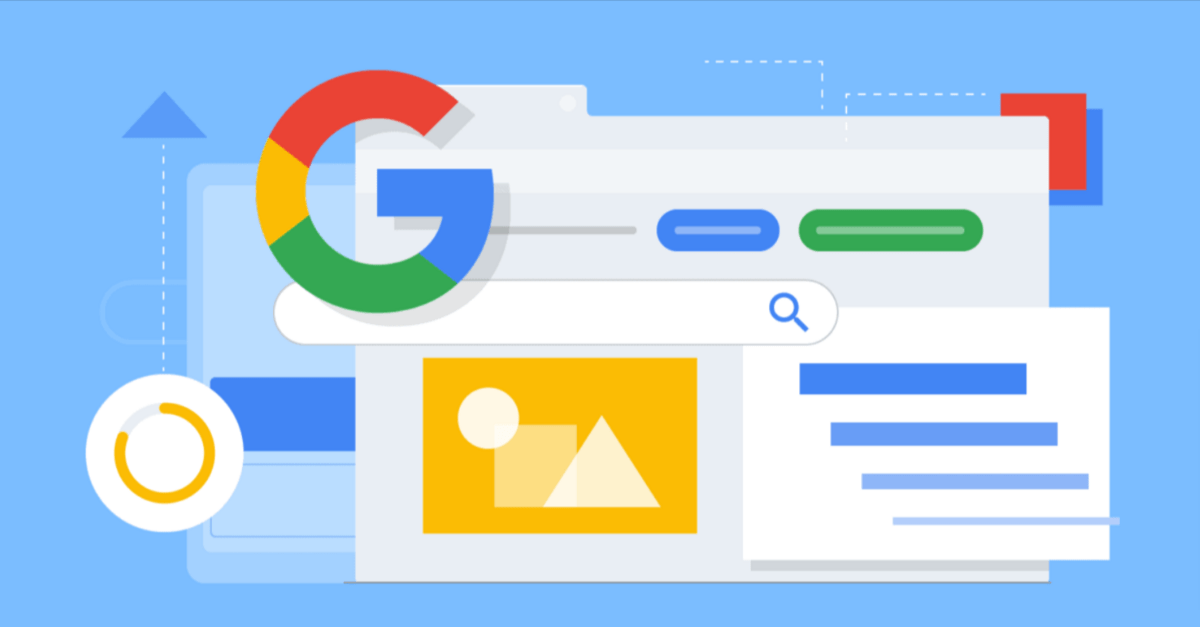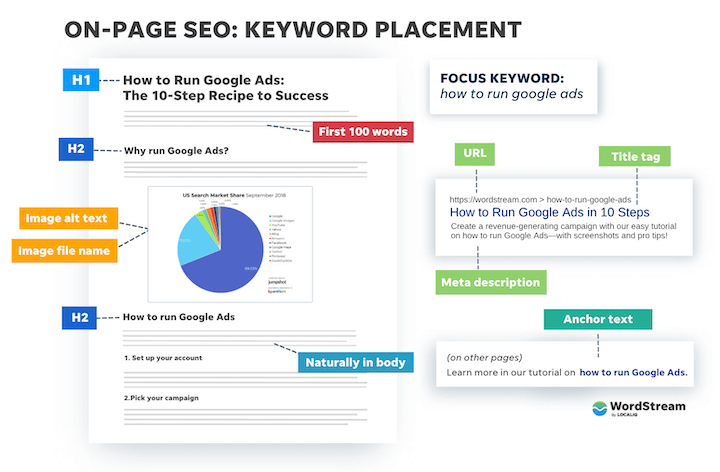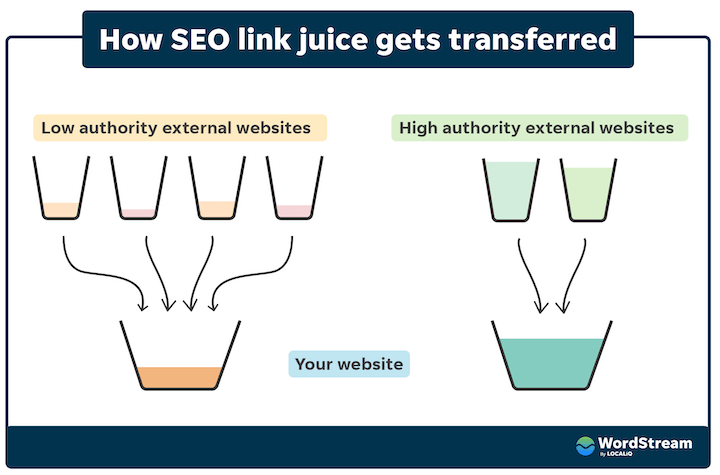
The competition to secure the highest ranks of search engine result pages (SERPs) is getting more challenging over time. New sites sprouting and algorithms changing. Your web pages may sink into a sea of content without a robust SEO strategy.
Ranking factors are vital elements that website owners, businesses, digital marketers, and general writers must comprehend. They are keys to making your website discoverable through organic search.
You may think social media marketing is enough to grow your business, but it isn’t. An optimized website with robust SEO strategies is vital to growing your business.
This article aims to help you comprehend all about ranking factors. Especially how to win Google’s first result page.
You’ll be able to improve your website. Also, web page performances through practical steps. Without further ado, will we begin discussing the basics? Keep scrolling!
Effortlessly export your Google Docs to WordPress with just 1-click.
Get Started Today
Ranking factors are a series of criteria used by search engines. In crawling, indexing, and evaluating web pages.
They are the signals for search engines to examine web pages’ quality and relevance to specific queries.
The result of the ranking factors evaluation will affect web rankings and organic search.
But guess what? As the leading search engine, Google has over 200 ranking factors. That makes it impossible for us to know them all.
Yet, many experts believe that there are some significant factors that writers, marketers, and web publishers should know.

Google considers some essential factors when indexing web pages through specific keywords or queries. Generally, those factors account for the following:
The following discussion will show a more detailed breakdown of those factors. But, as we are here, let’s discuss the last point, E-A-T. What is it all about? And why is it important for web pages?
Google mentions E-A-T in its Search Quality Rating Guidelines. It stands for expertise, authority, and trustworthiness. The web content categorized as high-quality by Google is the one that meets the E-A-T qualifications.
It goes beyond well-written and informative content but also the correctness of the content. In this case, Google goes more personal, looking at the site and the writer’s reputation. Whether this site is capable of writing this content? Or whether this writer is a trustable person to write about this topic?
In a nutshell, E-A-T is Google’s way of looking into:
Expertise: Content author’s quality. Whether they have the requisite skills and knowledge of specific topics.
Authority: Web page relevancies to answer queries. Is your website the best and most relevant source to answer queries? Or are there better sites?
Trustworthiness: Authors’ and websites’ qualities in producing content. Is the author unbiased? Or is the author of the content being honest?
To sum up, the combination of the three points of E-A-T aims to give the best and most reliable source of information for readers that come from trustworthy web pages and authors.
Ranking factors are part of SEO practice. Considering the ranking factors will help you generate high-quality, relevant, and trustable content for specific queries. Thus, optimizing your ranking factors can help you secure the top rank on search engine result pages (SERPs).
A study shows that 95% of internet users never go past the first page. In other words, they don’t go to the second page to look for information. They most likely click the web links appearing on the first page results.
So, it’s vital to have your content up on the first page of SERPs. That’s the most significant way to drive high organic traffic, raise brand awareness, increase click-through rate (CTR), and boost the credibility of your brand.
Before delving deeper into the main discussions, you should know the four types of Google ranking factors. Understanding the types will help you optimize ranking factors better. Read the quick explanations of each type below.
Some factors that fall into the on-page segment are content quality and keyword optimization, including image optimization and niche expertise.
Off-page ranking factors include some points that help build your page quality. Some factors that belong to this categorization include NAP citations (Name, Address, Phone), backlinks, brand mentions, reviews, and social signals.
It refers to the measurements showing whether search engines can crawl, index, and render your content quickly and safely. Factors that go into this segment are page speed, core web vitals, mobile optimization, site architecture, and site security.
Local ranking factors are the composite of the three factors above, including a site’s content, technical implementation, backlink profile, site review and reputation, behavioral signals, and others.
Those ranking factors will help build a robust SEO strategy and strong online presence. Optimizing ranking factors is the only way to achieve your goals, including getting your web pages out in the first page results.
As part of the technical implementation, it’s also important to consider secure backend practices. Using FTPS Server Software can help encrypt file transfers between your hosting environment and administrators, reducing the risk of data breaches and improving the overall integrity of your infrastructure. This added security contributes to user trust, something that plays a subtle but important role in local SEO performance.
Now that you’ve read the basics and the importance of ranking factors, it’s time to jump into the main discussions of this article. Below we pieced together the ten most important Google ranking factors.
You should consider optimizing them to level up your SEO, secure the first page on search engine results, and generate higher organic traffic. Besides, there are many more benefits that you can get for securing the top rank.
Google rolled out its helpful content update in August 2022 that encourages people to focus on creating people-first content. In other words, SEO practices such as stuffing content with too many keywords won’t work anymore.
Google emphasizes that content creators should make helpful content that demonstrates first-hand expertise and offers in-depth knowledge. The main goal is to please readers and help them learn enough about the discussed topic.
Furthermore, leave behind the idea of creating content for search engines. Avoid producing content on various topics without having first-hand expertise. Google also states they don’t set a particular word count when ranking pages.
As content becomes the lifeblood of a website, having high-quality writing is necessary. It can be challenging to create one, but below are some points you should consider when creating page content that Google loves.
Valuable and trustworthy. Focus on creating valuable, personalized content with in-depth and accurate explanations. Consider what kind of insights readers can take after reading your post. Also, avoid adding unnecessary links, as they can be spammy.
Readable. Creating human-focused content requires you to be logical, organized, structured, and easy to understand the content. Don’t stuff your content with keywords because Google can penalize you for this. Consider using writing tools to ensure your content has good readability.
Authentic. The content you post should be fresh and plagiarism free. You can also re-create or update your old evergreen content to stay relevant to recent keywords.
Match the keywords. Adding too many keywords in a web post is bad, but having unrelated content and keywords is worse. Ensure that the content you create matches the keywords and gives relevant information.
Technical SEO is the next factor that you should consider checking and optimizing. It deals with structuring your content to be quickly crawled and indexed by Google. Below are some points you need to check when making and optimizing a web post.

Title tag: The title tag refers to your post title, the title that pops up on the SERPs. Include your keyword phrases in the page title. Again, ensure the keywords you choose are relevant to the page content.
Headings: Use headings to make a well-structured post and show content hierarchy. H1 means the title on your page, followed by H2, H3, and so on for subheads.
URL: Use short URLs that involve keywords of your choice. Content management systems (CMS) commonly have the feature to customize your URL to make it simple and easy to remember.
Meta description: Add a meta description to your post. It’s a short introduction to your post that commonly consists of no more than 160 characters. Make a catchy and attention-grabbing meta description to encourage readers to scroll your page.
Image alt text: Richen your post with visuals, such as images, graphs, and videos. Add alt text to your pictures that are relevant to keywords.
Schema markup: Schema markup is code that search engines use to read and understand your content. It helps search engines better represent your web page in the search results. Optimizing your technical SEO helps your content perform better by facilitating search engine bots to index your page faster. Thus, you get a better chance to secure the first page or even the top rank of search engine page results.
Page speed is one of the main factors that define your web performance. A website with fast page loads will positively impact the user experience. Not only for desktop performance, but you should also optimize your website for mobile use.
Use Google Search Console to see your web performance, including how it performs on mobile devices. Google requires website owners to make their site load fast on mobile devices. If not, Google may penalize your site. To avoid potential penalties and ensure a better user experience, it’s essential to improve page loading speed by optimizing images, minimizing code, and leveraging browser caching.
Pro tip: Comprehensive website performance optimization involves implementing advanced caching strategies, image compression techniques, and code minification to achieve optimal loading speeds across all devices.
Along with page speed, backlinks are also one of the main factors in building a winning web page. Backlinks refer to those links from other websites that lead back to your page. The more backlinks you get, the better Google will value your site.
Backlinks signal that your web is providing valuable content and is trustworthy. Furthermore, remember that one link from a high-authority website is way better than more links from a low-authority. See the illustration below.

Website owners, digital marketers, or general web writers should know how to get backlinks. Below are four link-building strategies that they can follow.
Magnet resource: You can create a web page that will act as a magnet resource. It can be in the form of research reports, comprehensive discussions, or expert interviews. Providing authentic and valuable information will drive people to cite your page, resulting in automatic backlink building.
Outreach: Having your post naturally generate backlinks can take forever. Consider doing cold outreach by finding websites with the same niche as yours and pitching your content to the author for a link. Or, reach out to a Blogger Outreach Service to find and establish valuable and relevant relationships on your behalf.
Guest post: Guest posting is a common thing for digital marketers or web publishers. You take the extra mile by offering to write a post for other websites. In return, you can include your link through anchor text in the post.
It’s worth trusting that a web post with high social shares is more likely to be on the top rank. The more people share your pieces, means your content is useful, and readers value your site as a credible source.
For example, a user shares your content on social media. It will reach new potential readers and get a higher chance of generating more traffic. Best of all, social shares may also help your content build backlinks on its own.
Besides providing valuable content, you should make your web pages easily shareable by providing social buttons. You can also share your content pieces directly on social media to reach a wider audience. Also, you should consider optimizing your content for voice assistance platforms. More users are now searching for information using tools like voice search, so ensuring your content is easily discoverable through spoken queries can help expand your reach even further.
Business owners and digital marketers must add business information to boost web performance. Real business information is a brief overview of your business that commonly includes the year founded, founders, business sector, headquarters, online phone number, and others.
Commonly, you can see business information on the right side of your desktop screen when looking for certain queries. As it becomes one of the most vital local SEO ranking factors, below are some points to look after in providing business information, as follows:
Google introduced core web vitals as a new ranking factor in 2021. It’s part of the page experience update, which implies the level of visitors’ experience on your page. Thus, you can see how your web visitors engage with your pages.
Core web vitals include three critical metrics, which are:
LCP: stands for Largest Contentful Paint, which represents the time required for page visible elements to load on the page.
FID: stands for First Input Delay, which represents the time required for a page to process the first click or tap on a page’s links or buttons.
CLS: stands for Cumulative Layout Shift, which refers to whether your page performs incidental movements or unexpected popups.
Site architecture refers to the way you link your web pages internally. Internal linking is a way to help search engines crawl and index your website faster and better. It refers to adding hyperlinks on several anchor texts that lead to other pages on your website.
You can consider applying topic clusters to build a good site architecture. You need to decide on a general keyword to create a pillar page. You also make cluster content in pages with more specific keywords.
Provide a secure website for users to surf by implementing HTTPS rather than plain HTTP. The s in HTTPS stands for secure. You must get an SSL (secure sockets layer) certificate to use HTTPS for your site.
You can get it through your hosting company by choosing the level of security you need for your platform. You can get a free SSL certificate or a paid one issued by Certificate Authorities (CAs) and implement SSL monitoring to check its validity.
An excellent user experience will make your visitors stay for a while on your site. Build an intuitive website using an AI website builder through clear navigation, helpful microinteractions, fast-load buttons, valuable content, and more.
Moreover, look into page metrics to see visitor behavior on your page. It’s your way to spot problems and fix them immediately to improve page performance. Some important metrics you should understand are:
CTR (Click-Through Rate): The percentage of internet users who click on your website after appearing in the search engine page results. The higher the CTR is, the better.
Bounce Rate: It counts the number of visitors who click on your page but leave instantly due to unmatched intentions. You should aim for lower bounce rates to show that your page is worth reading and make visitors stay for a while.
Dwell Time: The time measured to know how long visitors remain on your site upon arriving. A higher dwell time signals good page performance.
Thus, your content and keywords must be relevant to optimize the three metrics. Improve your keywords implementations on title, tags, content, and meta description if you’re unsatisfied with your results.
Considering the long list of ranking factors you should take care of, establishing a powerful online presence for your website is never a one-night game. Making your website discoverable through the first page results may take months or years, but your effort will pay off one day.
Another point to remember is that SEO practices, trends, search engine algorithms, and content regulations will change. So, keeping yourself aware of the latest update can help you stay relevant and get the upper hand over competitors.